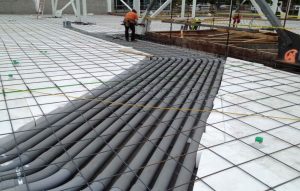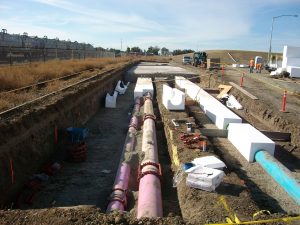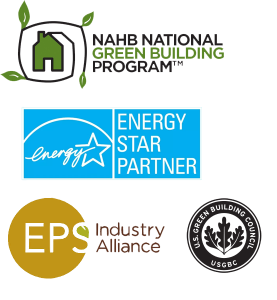EPS Geofoam offers superior protection for utilities
Since its first use as infill for a road embankment in 1972 in Norway, expanded polystyrene (EPS) geofoam has been an integral tool for project engineers looking for a light-weight fill material that doesn’t require preloading, requires minimal maintenance, can be continuously exposed to water and resists sheering. Its engineered density also ensures that the substrate won’t further compress which reduces the risk of slope failures. And when protection from pests is crucial, it can be directly manufactured with an inert additive to repel carpenter ants and termites.
Geofoam is an optimal choice for use as a fill material when utilities and critical infrastructure elements must be protected. Because it is approximately 1/100th the weight of most soils, EPS Geofoam is commonly used in above- and below-grade scenarios.

Surviving constant change
Geofoam can be manufactured to multiple density, size and shape specifications, which means it can be sent from the factory to fit around conduit and pipes, utility poles or access shafts. And, because it’s easy to work with and customize on site, small openings, anchor points or even ground wires can be accommodated. This customization is crucial when retrofitting existing structures or adding modern utilities.
EPS also doesn’t settle in the way soil or other infills do, as it significantly reduces the sheering or crushing that frequently cause utility failures. This makes EPS geofoam a great solution when designing utility chases or constructing infrastructure that will need to be continuously updated such as stadium or theater seating.
EPS geofoam is a useful material in moisture-rich environments, such as bridges and embankments over natural water sources or culverts. It reduces the lateral loads on those pipes and can even protect the utility during seismic activity by reducing axial strain.
Protect your infrastructure the Alaskan way
When a project calls for extreme performance in extreme circumstances, engineers turn to EPS Geofoam to protect critical utilities and infrastructure. The combination of performance and customization made EPS geofoam a perfect fit as a protective and insulative layer around the Alyeska Pipeline.
Since the main pipeline’s construction, crews had battled corrosion. This problem became extremely evident on the North Slope in a remote location called Atigun Pass. Located at an elevation of 4,739 feet above sea level, Atigun is the highest pass in Alaska that’s maintained throughout the year. The weather is harsh and highly unpredictable, providing many challenges such as freeze thaw cycles and a high concentration of seasonal moisture. The original XPS installation was failing and the moisture exposure was causing the pipeline to corrode.
Customized EPS geofoam pipe jackets were the answer to protecting the pipeline as it passed through the mountain range. EPS offered low moisture absorption rate, stable thermal protection, lightweight performance and customizable. The EPS geofoam pipe jackets are still in place today.
Insulfoam has been used in countless above- and below-grade stabilization and fill scenarios. And in each of them, we have been able to protect new and existing utilities along the way. Contact our team to see how Insulfoam GF can be the foundation to your next infrastructure project.

